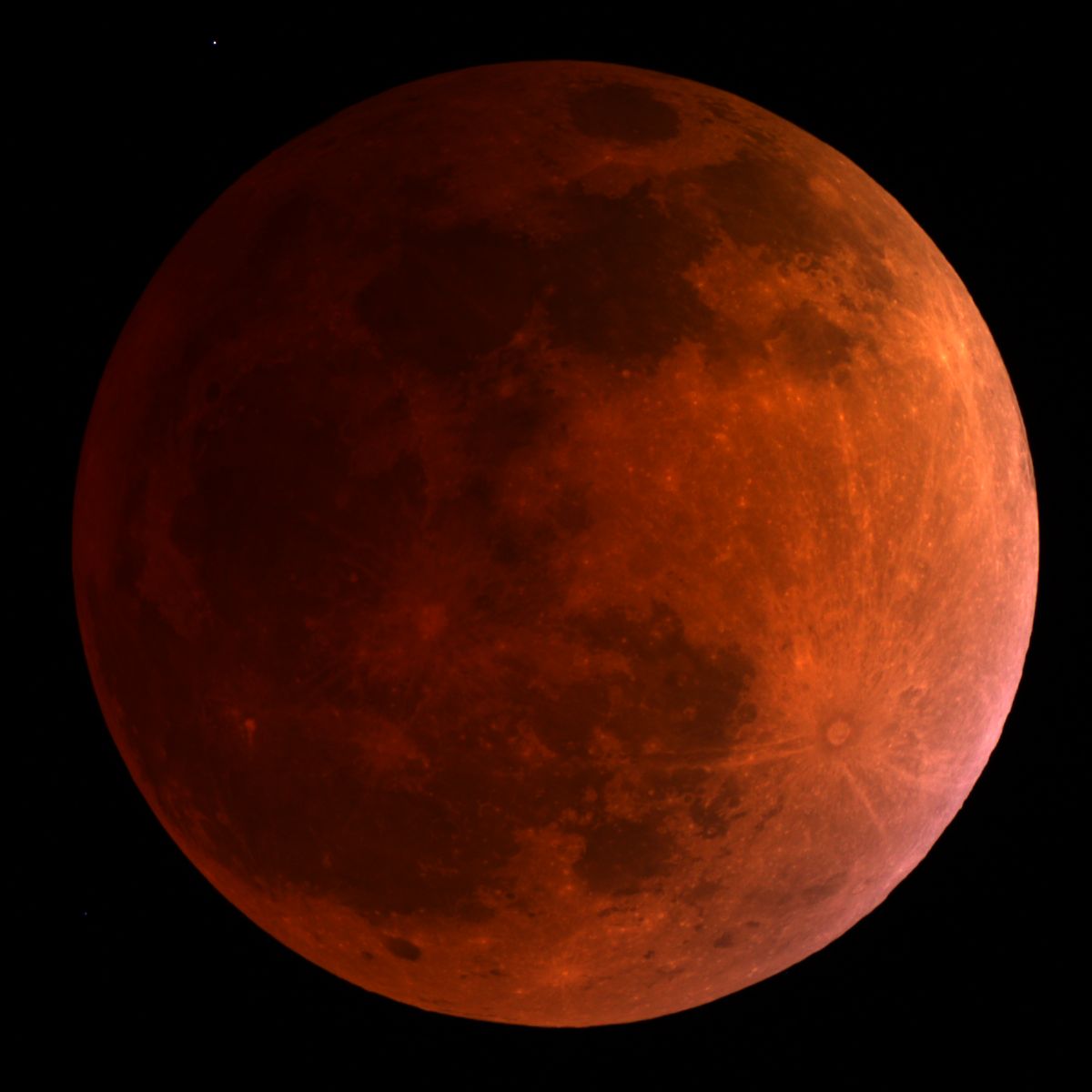Why the Blood Moon Eclipse Turns Red

On Sunday (Sept. 27), skywatchers across the United States will be in for a special treat: The full "supermoon" (a full moon when the moon is closest to Earth in its orbit) will go into eclipse. A lunar eclipse occurs when the moon passes into the shadow of the Earth.
There are several "flavors" of eclipse. A penumbral eclipse happens when the moon just grazes the thinnest part of Earth's shadow. If the moon partly goes into the shadow, observers see a partial eclipse. A total lunar eclipse is the most spectacular of the three: The moon goes fully into the shadow and appears either red or brown.
Sometimes an eclipse moon is called a "blood moon" because of this rusty color. But why does the moon turn red, and not simply darken to black when it goes into the shadow? As NASA explains, it's because the Earth's atmosphere extends beyond the planet, and sunlight passes through it, still reaching the moon. [Supermoon Lunar Eclipse 2015: Complete Viewing Guide]
"During a total lunar eclipse, white sunlight hitting the atmosphere on the sides of the Earth gets absorbed and then radiated out (scattered). Blue-colored light is most affected," NASA officials wrote online. "That is, the atmosphere filters out (scatters away) most of the blue-colored light. What's left over is the orange- and red-colored light."
The light through Earth's atmosphere then falls onto the moon. NASA notes that the red light seen during a lunar eclipse is much dimmer than a typical moon's light. That happens because the red light is reflected back to Earth, and it is much dimmer than the white light the sun usually shines onto the moon's surface.
The moon turns different shades of red, orange or gold with each eclipse. That's because the shade of the light reaching the moon depends on what is in Earth's atmosphere (the amount of water and particles), as well as the atmosphere's temperature and humidity, NASA wrote. For example, a recent volcanic eruption could send more particulates into the atmosphere, further darkening the moon during an eclipse.
Editor's Note: If you snap an amazing picture of the Sept. 27 total lunar eclipse and want to be featured in a story or gallery, you can send photos, comments, and your name and location to managing editor Tariq Malik at spacephotos@space.com.
Breaking space news, the latest updates on rocket launches, skywatching events and more!
Follow Elizabeth Howell @howellspace, or Space.com @Spacedotcom. We're also on Facebook and Google+. Original article on Space.com.

Elizabeth Howell (she/her), Ph.D., was a staff writer in the spaceflight channel between 2022 and 2024 specializing in Canadian space news. She was contributing writer for Space.com for 10 years from 2012 to 2024. Elizabeth's reporting includes multiple exclusives with the White House, leading world coverage about a lost-and-found space tomato on the International Space Station, witnessing five human spaceflight launches on two continents, flying parabolic, working inside a spacesuit, and participating in a simulated Mars mission. Her latest book, "Why Am I Taller?" (ECW Press, 2022) is co-written with astronaut Dave Williams.


